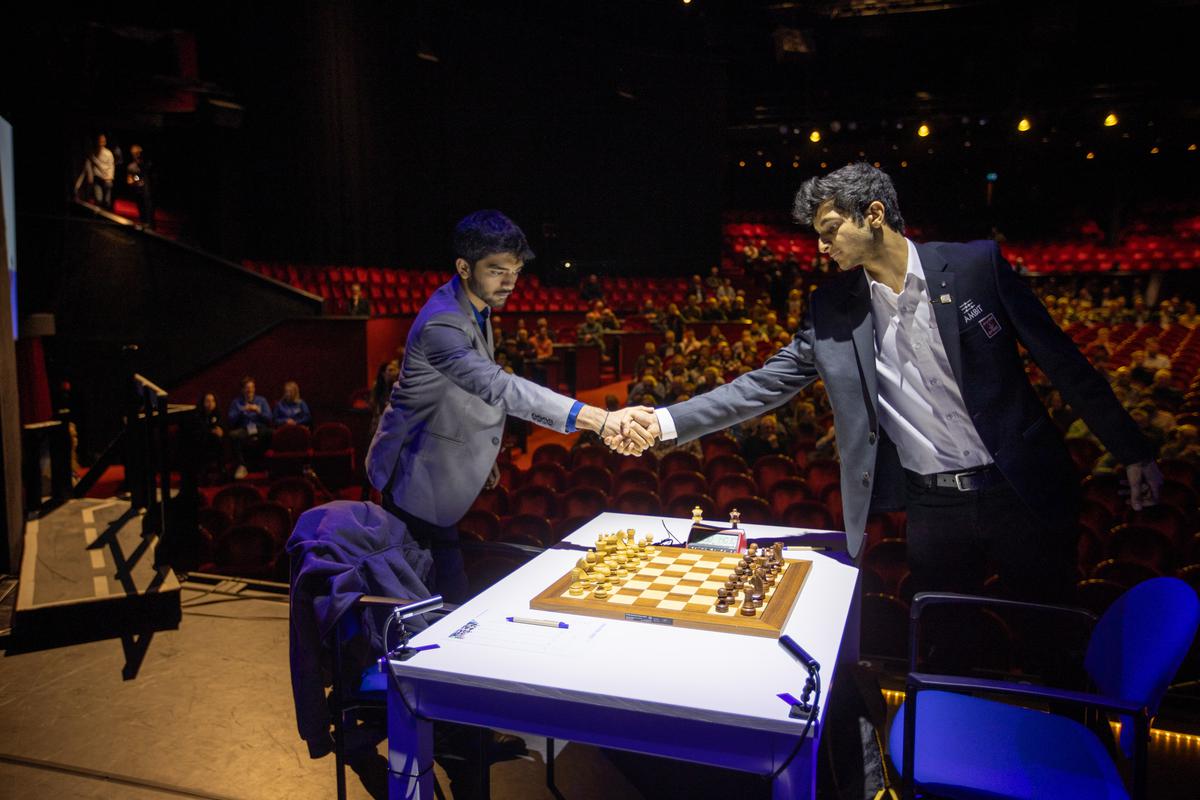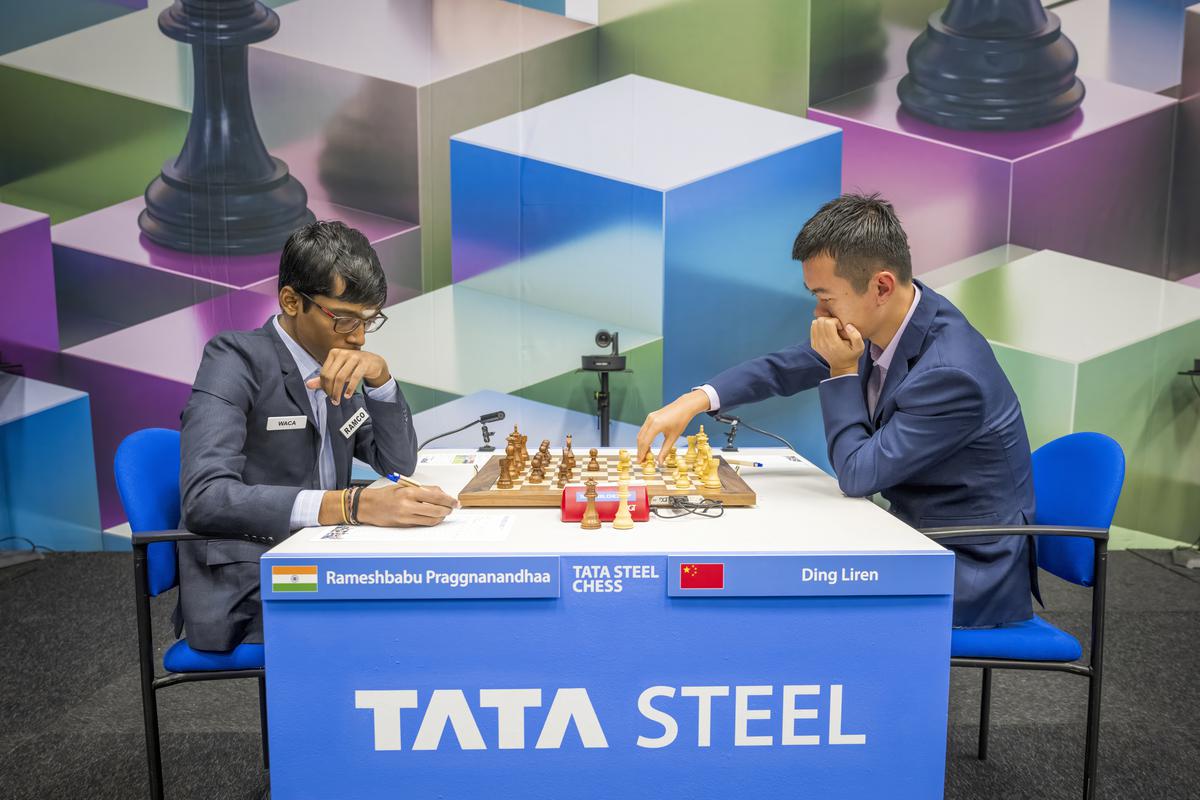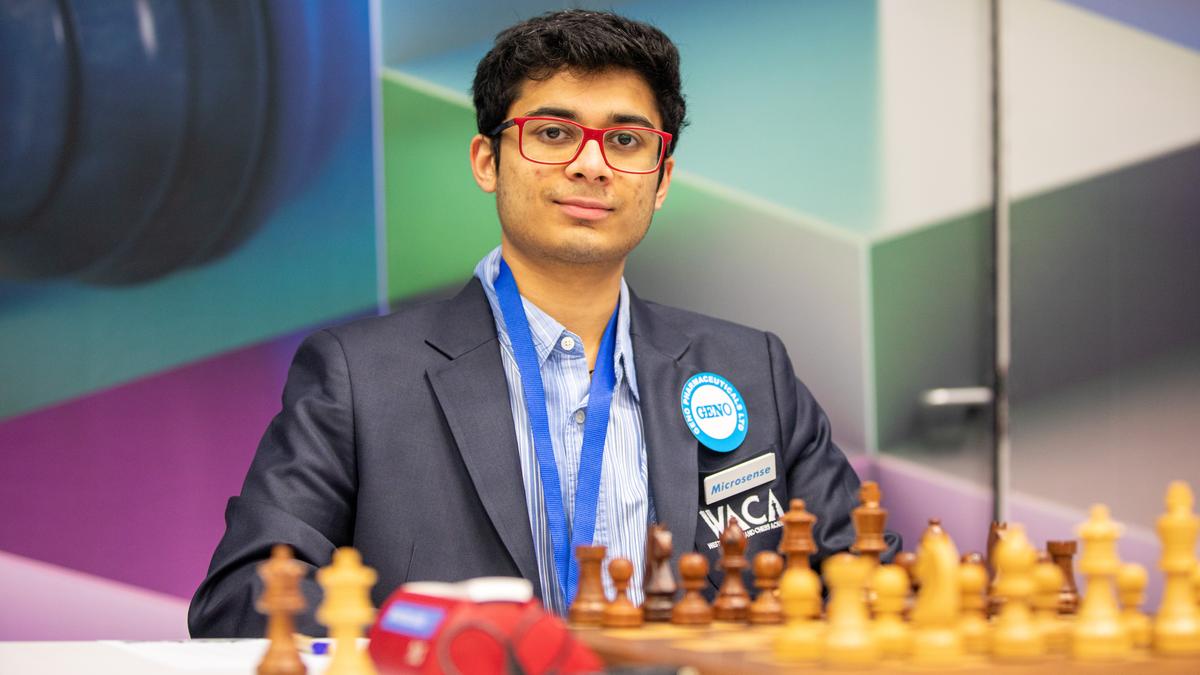India flexes its might with strong show at Tata Steel Chess
From the era of Viswanathan Anand challenging world chess giants to today’s immensely gifted youngsters making waves against elite players, Indian chess is giving fans more reasons to rejoice than ever.
After the 2022 Chess Olympiad and the 2023 World Cup highlighted the growth of Indian chess, news of five Indians qualifying for the 2024 Candidates tournaments solidified India as a new force.
If the twin triumphs of Vidit Gujrathi and R. Vaishali in the premier Grand Swiss event last year underlined the increasing chess strength of India, the consistency of D. Gukesh, Vidit, and an unbeaten R. Praggnanandhaa in the Tata Steel Masters in Wijk aan Zee, the Netherlands, was another fine advertisement for Indian chess.
Leon Mendonca’s (9.5/13) win in the Challengers section and his invite to the esteemed 2025 Tata Steel Masters highlight Indians as bold competitors unswayed by reputations.
Gukesh continues to thrill. He overcame an ordinary start to display his class and tied for the Masters title with eventual champions Wei Yi, Anish Giri, and Nodirbek Abdusattorov at 8.5 points from 13 rounds in the 14-player field.
Until 2018, those tied for titles were considered joint champions. Since then, tie-break games have been introduced to ascertain the winner.
For instance, five-time winner Anand won twice and tied thrice between 1989 and 2006. For the record, eight-time winner Magnus Carlsen’s only shared title was also his first in 2008, with Armenian Levon Aronian. He beat the field in 2010, 2013, 2015, 2016, 2018, 2019, and 2022.
So, coming back to the competition in 2024, four-man knockout blitz tie-break games were needed to decide the champion. The players were given a standard starting time of three minutes plus a two-second increment per move. In the sudden death, the player with white pieces got 2.5 minutes.
Gukesh battled back from a 0-1 deficit against Anish by winning the second game and taking out the defending champion in sudden death for a place in the final.
In the other semifinal, Wei Yi was lucky to escape with a draw in the first game against Abdusattorov and then came through sudden death.

Unfazed by challenges: The consistency of D. Gukesh and Vidit Gujrathi in the Tata Steel Masters in Wijk aan Zee, the Netherlands, was a fine advertisement for Indian chess.
| Photo Credit:
Harry Gielen
Unfazed by challenges: The consistency of D. Gukesh and Vidit Gujrathi in the Tata Steel Masters in Wijk aan Zee, the Netherlands, was a fine advertisement for Indian chess.
| Photo Credit:
Harry Gielen
In the final, Wei’s cool composure and Gukesh’s sub-par time management combined to make him the first Chinese champion since the inception of the event in 1938. Gukesh had his chances in the first game, which ended in a draw, but in the second, he stayed low on time and finally blundered a rook.
Wei, who lost the second round to Gukesh, was playing only his second tournament outside China after the pandemic. He bounced back into title contention by winning the last three games, including the final round against Vidit.
Seeded eighth in a strong field of 14 players, Wei surprised himself by winning the strongest tournament of his career. Tenth seed Gukesh, the lowest ranked among the three Indians, won six games, starting with his second-round conquest of Wei.
Though defeats to World Champion Ding Liren and Anish in succession set him back, he responded brilliantly by winning the following three rounds against Russian Ian Nepomniachtchi and the Dutch duo Jorden van Foreest and Max Warmerdam.
Thereafter, among others, Gukesh drew with Vidit and allowed Praggnanandhaa to slip away with a draw.
Praggnanandhaa’s alertness ended the contest when he claimed a third-time repetition of the position in the presence of an arbiter.
Gukesh did not allow this disappointment to dampen his spirits, and he won an exciting final round against flashy Iranian Parham Maghsoodloo to tie for the title. A gain of 18 rating points underlined his superlative showing in such a strong field.
A lot of credit is due to Vidit for the crowded first place at the end of 13 rounds. Triumphant over the fancied Alireza Firouzja in the seventh round, Vidit opened the title race with a penultimate-round win over leader Abdusattorov before losing to Wei.
Praggnanandhaa was the epitome of consistency. He defeated the two Chinese World Champions, Ding Liren and Ju Wenjun, drew against the rest, and marginally raised his rating by four points.
Overall, it was a terrific performance from the three Indians preparing for their biggest test when they make their Candidates debut in April.

Rock steady: Praggnanandhaa was the epitome of consistency. He defeated the two Chinese World Champions, Ding Liren (in pic) and Ju Wenjun, drew against the rest, and marginally raised his rating by four points.
| Photo Credit:
Frans Peeters
Rock steady: Praggnanandhaa was the epitome of consistency. He defeated the two Chinese World Champions, Ding Liren (in pic) and Ju Wenjun, drew against the rest, and marginally raised his rating by four points.
| Photo Credit:
Frans Peeters
In the Challengers section, Mendonca punched way above his weight to emerge champion. Seeded seventh in the field of 14, the youngster started with an expected victory over lowest-ranked Dutch Eline Roebers before drawing with lower-rated French Marc’Andria Maurizzi and Belgian Daniel Dardha. This slow start was followed by two losses in the space of three rounds that included a victory against D. Harika.
With three points from six rounds, Mendonca was far from his winning form. But what followed was a dramatic transformation.
He won the next three rounds, drew with top-seeded American Hans Moke Neimeann, and finished the home run with another hat-trick of victories, ending with the conquest of Divya Deshmukh.
Starting the event with a rating of 2608, Mendonca performed at 2742 to gain a whopping 23 rating points. Creditably, out of the eight victories, four came against higher-rated rivals.
Mendonca’s title win came following a late twist to the tale. Maurizzi remained a long-time leader and, with two rounds to go, enjoyed a one-point lead over Mendonca.
In the penultimate round, Dardha defeated Maurizzi, and Mendonca beat the UAE’s Salem Saleh to catch up. In the final round, the experienced Dutch Erwin L’ami held Maurizzi, while Mendonca capitalised on a blunder from Divya to win and claim qualification to the 2025 Masters section.
Harika and Divya, rated among the last four players, managed to play marginally above their ratings.
Seeded 11th, Harika finished ninth after scoring two victories over lower-rated players, losing four and drawing the rest to add five rating points. Divya, seeded 13th, won three, lost seven, and drew three to gain four rating points.
Overall, the Indians had a good outing, with all six on view performing above their ratings.



